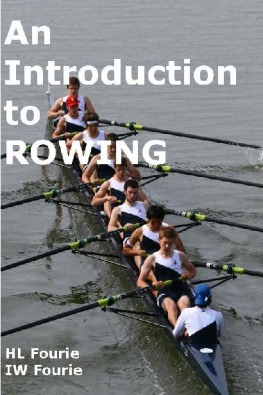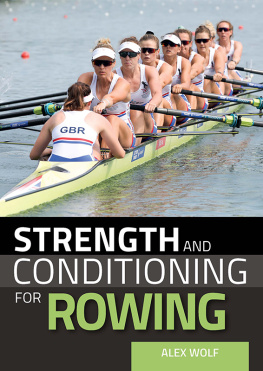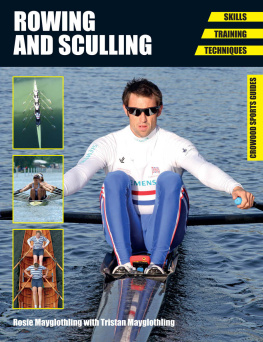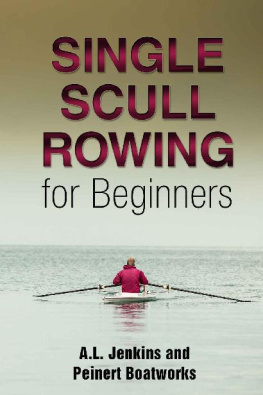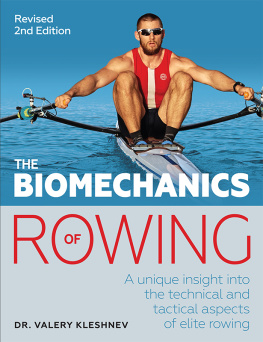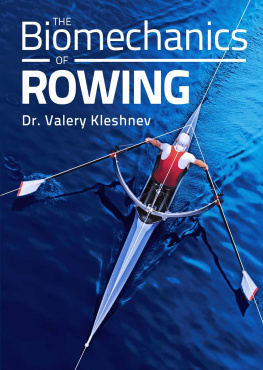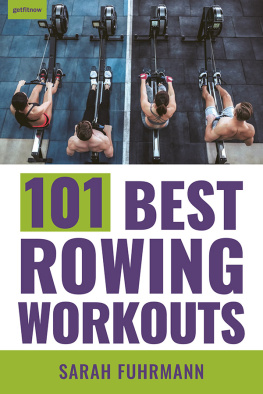HL Fourie - An Introduction to Rowing
Here you can read online HL Fourie - An Introduction to Rowing full text of the book (entire story) in english for free. Download pdf and epub, get meaning, cover and reviews about this ebook. year: 2013, genre: Children. Description of the work, (preface) as well as reviews are available. Best literature library LitArk.com created for fans of good reading and offers a wide selection of genres:
Romance novel
Science fiction
Adventure
Detective
Science
History
Home and family
Prose
Art
Politics
Computer
Non-fiction
Religion
Business
Children
Humor
Choose a favorite category and find really read worthwhile books. Enjoy immersion in the world of imagination, feel the emotions of the characters or learn something new for yourself, make an fascinating discovery.
An Introduction to Rowing: summary, description and annotation
We offer to read an annotation, description, summary or preface (depends on what the author of the book "An Introduction to Rowing" wrote himself). If you haven't found the necessary information about the book — write in the comments, we will try to find it.
An Introduction to Rowing — read online for free the complete book (whole text) full work
Below is the text of the book, divided by pages. System saving the place of the last page read, allows you to conveniently read the book "An Introduction to Rowing" online for free, without having to search again every time where you left off. Put a bookmark, and you can go to the page where you finished reading at any time.
Font size:
Interval:
Bookmark:
By
IW Fourie, HL Fourie
Copyright 2013 by HL Fourie
Rowing, or crew as is it occasionally known in America, is a popular sport in the USA and internationally. This book is an introduction to the sport of rowing. The book covers the history, the basics of rowing, the types of boats, equipment, stroke technique, the handling and rigging of boats, the role of the coxswain, the different types of races, clubs and associations, and regattas. This book includes advice and tips for those who are new to the sport and want to quickly get an understanding of the details of rowing.
Rowing is a fun, enjoyable sport and is in fact one of the oldest competitive sports. Rowing is suitable for men and women of all ages. Rowing provides a challenge for a team in a crew of two, four or eight rowers, and for an individual in a single scull. Competitive rowing is regarded by exercise physiologists as one of the most physically demanding sports along with cross-country skiing and running. Rowing is one of the few sports where a novice can become a top class rower within a few years.
Rowing is a total body workout. To the casual spectator rowing looks only like an upper body sport. Although upper body strength is important, most of the power of the rowing stroke comes from the legs. Rowing is one of the few athletic activities that involve all of the body's major muscle groups. It is a great aerobic workout, in the same vein as cross-country skiing, and has the benefit of being a low-impact sport. As a competitive sport, rowing demands endurance, strength, balance, mental discipline, and an ability to continue on when your body is demanding that you stop.
The boats are also called shells because the hull is only about one quarter inch thick, so that it is as light as possible. In rowing all the rowers (except the coxswain) face away from the direction the boat is traveling, that is, they face the stern of the boat and not its bow.
There are two main types of rowing:
- Sweep boat rowing. Each rower has one oar held by both hands. The oar extends either to the starboard side or the port side of the boat. Since the forces are applied asymmetrically to the shell a sweep boat is more strongly constructed and is therefore heavier than a scull. Sweep boats have a rudder for steering.
- Sculling. Each rower has two oars, one in each hand. The oar itself is called a scull and is shorter than the oars used on a sweep boat. The boat is called a scull or a sculling boat, and the rower is called a sculler. Most sculls have no rudder and are steered by means of oar movements.
Although one may initially think that the rower is pulling an oar, in actuality the rower achieves most of the power by pushing the sliding seat towards the bow of the boat. Most of work is done by the legs and the upper back. The back should be kept straight from the hips to the shoulders. There is no bending at the waist which could lead to injury to the lower back.
This book is no substitute for actually being in a shell under the guidance and instruction of a qualified coach. There are many rowing clubs and associations throughout the world that welcome newcomers to the sport and provide coaching lessons and clinics. The Further Reading chapter has pointers to web sites that have contact information for many clubs and associations.
This book is divided into several chapters, organized by subject.
Chapter 1: History
This covers the fascinating history of rowing and describes how rowing has evolved from the transportation system of the old to the modern sport of rowing.
Chapter 2: Equipment
Here you will find descriptions of the boats, oars and other equipment used in rowing.
Chapter 3: Boat Handling
This chapter goes into the proper handling and rigging of boats.
Chapter 4: Sweep Rowing
This chapter introduces you to sweep rowing. The details of the stroke are described.
Chapter 5: Sculling
This chapter introduces you to sculling.
Chapter 6: Rowing Physiology
This chapter describes how the body consumes oxygen to generate the energy that is needed for rowing. The process of respiration and breathing are covered.
Chapter 7: Training
This chapter discusses training and the various drills tha can used to improve stroke technique.
Chapter 8: Coxing
This chapter covers the role and responsibilities of the coxswain. It also describes the commands and equipment that a coxswain will use.
Chapter 9: Races and Regattas
The different types of races are described in this chapter. These include sprints, head races and Bumps races. There is also a section on the more well known regattas.
Chapter 10: Clubs and Associations
This chapter lists some of the many rowing clubs and associations.
Chapter 11: Further Reading
This chapter lists the many reading resources that provide more background and detail on specific aspects of rowing as well as websites that provide information on equipment, clubs and associations.
There many other books that cover details on individual aspects of the sport in much more detail. The further reading chapter lists a selection of these books.
In 1315 the Venice Regatta, the Regata Storica, was held for the first time. This regatta is still held today on the Grand Canal with races between different types of boats including the two-oared gondolino.

Figure 1: The River Thames with St. Paul's Cathedral on Lord Mayor's Day - Canaletto
There was competitive rowing between watermen who ferried passengers across the river Thames at London in small ferry barges called wherries. These competitions evolved to today's sport of rowing. In England oared barges were part of the Lord Mayor's water processions from 1454 until 1856. The oldest formal rowing event, Doggett's Coat and Badge, was first held in 1715 between apprentice English watermen who would provide ferry service across the Thames river. The Irish comedian, Thomas Doggett, offered an orange coat and a silver badge as a prize. The race is still rowed annually on the Thames.

Figure 2: Doggett's Coat and Badge
The race of 4 miles 5 furlongs (7,400 m) race is now held annually on the Thames between London Bridge and Cadogan Pier, Chelsea, passing under a total of 11 bridges.
Two eight-oared cutters, the Chatham and the Invincible, raced on the Thames from Westminster to Richmond on September 8 1788. This is the first boat race recorded in England's Annual Register and the Chatham won.
Amateur rowing started at Oxford University in 1815 and at Cambridge University a short while later. The oldest boat clubs in the world were founded about this time. These included the Leander Club, founded in 1818, Brasenose College Boat Club, Jesus College Boat Club and the Westminster School Boat Club, founded in 1813.
The first race between the Oxford and Cambridge universities was held in 1829, using professional watermen to coxswain their boats. The professionals were barred after the first race, and a highly formal code of amateurism has characterized English rowing ever since. Rowing is a gentleman's sport, with rules and behavior codes designed to encourage good sportsmanship.
The first French rowing club Societe Havraise de l'Aviron was established at Le Havre in 1838.
Font size:
Interval:
Bookmark:
Similar books «An Introduction to Rowing»
Look at similar books to An Introduction to Rowing. We have selected literature similar in name and meaning in the hope of providing readers with more options to find new, interesting, not yet read works.
Discussion, reviews of the book An Introduction to Rowing and just readers' own opinions. Leave your comments, write what you think about the work, its meaning or the main characters. Specify what exactly you liked and what you didn't like, and why you think so.

